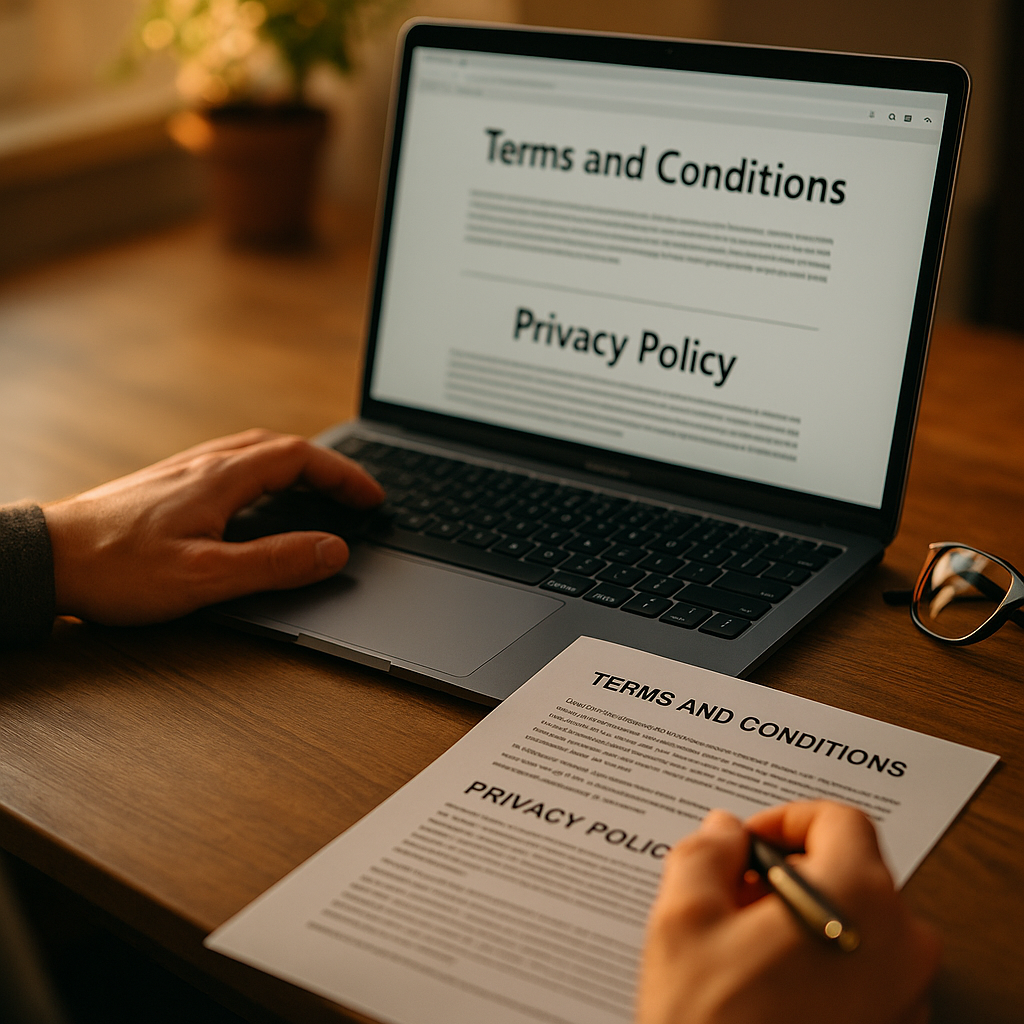Creating a clear and effective website terms and conditions and privacy policy in 2025 is essential for protecting both your business and users. With increasing global regulation and privacy expectations, transparency has never been more important. Discover practical strategies to craft impactful legal pages that foster trust, fulfill compliance, and enhance your online reputation—let’s explore what matters most for your website!
Why Website Terms and Conditions Are Essential for Legal Protection
Website terms and conditions serve as a contract between you and your site visitors, outlining the rules, acceptable use, limitations of liability, and other key areas of interaction. Without properly drafted terms, your business is exposed to unnecessary risks. In 2025, consumers demand transparency, while courts and regulatory bodies expect clear, enforceable guidelines.
Key reasons to prioritize comprehensive website terms:
- Reduce legal liability: Clearly defined policies help shield your business from lawsuits and disputes.
- Define user behavior: Outline acceptable usage to deter misuse, spam, or intellectual property theft.
- Establish dispute resolution: A dispute process can prevent expensive litigation, such as mandating arbitration.
- Build credibility: Demonstrate professionalism and earn user trust with transparent documentation.
Terms and conditions should align with your business model—don’t rely on generic templates. Consult with legal experts to tailor every clause to your operational needs.
Essential Elements of an Effective Privacy Policy
An effective privacy policy explains how your website collects, uses, stores, and protects personal data. With data privacy laws like the GDPR and the CCPA shaping the digital landscape, having a robust privacy policy is non-negotiable in 2025.
- Clear Data Collection Statements: State what data you gather (e.g., emails, location), the methods (e.g., forms, cookies), and the purpose (e.g., marketing or analytics).
- Usage and Sharing Practices: Explain if data is shared with third parties, for what reasons, and how you safeguard this information.
- User Rights: Address how users can access, modify, or delete their data. Mention any opt-out or consent withdrawal mechanisms.
- Contact Information: Provide a clear method for users to raise privacy concerns or questions.
- Cookie and Tracking Usage: Disclose your use of cookies, pixels, or tracking scripts, and offer options for user control.
Maintain your privacy policy with annual reviews or as laws and practices evolve. Transparency here is not just best practice; it’s a competitive advantage.
How to Write Clear and Understandable Website Policies
Complex legal jargon can undermine user trust and compliance. The most effective website terms and conditions and privacy policies use plain language, short sentences, and active voice. Ensure your audience understands their rights and obligations without consulting a lawyer themselves.
- Use concrete examples: Illustrate key points with real-world scenarios (e.g., “If you breach our terms by uploading harmful software…”).
- Structure for readability: Use headings, bullet points, and concise paragraphs to make information easy to scan.
- Define legal terms: When legal language is required, define any complex terms at the start of your document.
- Update on changes: Clearly state how changes to your policy will be communicated, and when they take effect.
Accessibility is also vital. Ensure your policies are mobile-friendly, support screen readers, and are located in a prominent website area, such as a footer link.
2025 Compliance: Meeting Global Legal Standards
With regulatory frameworks like Europe’s GDPR, Brazil’s LGPD, and recent U.S. privacy acts, website owners in 2025 must design terms and policies to meet international standards—regardless of their location. Non-compliance risks fines, reputational damage, and legal action.
To ensure compliance:
- Map out where your users reside to identify applicable laws.
- Use dynamic tools (such as geo-based notice banners) for region-specific compliance requirements.
- Keep abreast of updates—governing bodies often revise provisions in response to new technologies and threats.
- Consult a certified legal professional who understands digital business and regional nuances.
Your documentation should specify your compliance efforts. For instance, state, “Our practices align with the General Data Protection Regulation (GDPR) for EU visitors.” This openness builds confidence and clarity.
Best Practices for Updating and Displaying Policies
Your website terms and conditions and privacy policy are living documents. Outdated policies can be as risky as having none at all. In 2025, agile businesses regularly update these documents to reflect shifting laws, technologies, and business activities.
- Set a review schedule: Plan reviews at least every twelve months or after major operational changes.
- Transparency in amendments: Log all substantive updates with a “last updated” date and, if significant, notify users directly.
- Encourage acknowledgment: For transactional or membership sites, require users to accept updated terms actively.
- Prominent placement: Make links to your policies visible site-wide—footer links are standard best practice.
By treating your legal pages as business assets, you demonstrate responsibility, creating a safer and more trustworthy user experience.
FAQs: Website Terms and Conditions and Privacy Policy in 2025
-
Do I need both a terms and conditions and a privacy policy?
Yes. Terms and conditions outline legal usage rules, while a privacy policy details your data practices. Both are required for compliance and trust. -
Can I copy these pages from another website?
No. Policies should be customized for your business, data collection, and jurisdiction. Copying may expose you to legal and reputational risks. -
How can users give valid consent?
Consent must be explicit—require users to click and agree before accessing premium features or submitting information, and allow easy withdrawal. -
What happens if I don’t comply with recent privacy laws?
Non-compliance in 2025 may result in heavy fines, website blocking, or lawsuits. Regulators are enforcing rules vigorously worldwide. -
How often should I update my policies?
Review and update at least annually or whenever significant legal, business, or technical changes occur.
Clear website terms and conditions and privacy policies are pivotal for legal compliance, trust, and user experience. Make your documents concise, transparent, and regularly updated for 2025—and always get legal advice to ensure robust protection. Start refining your policies today to future-proof your website’s integrity.
